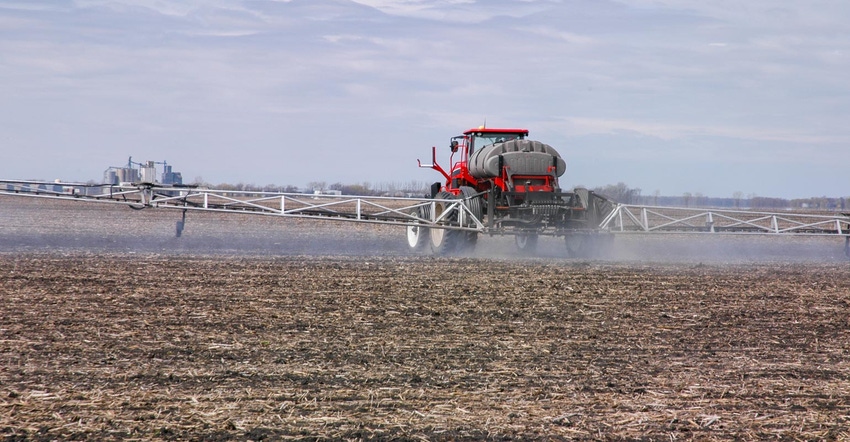August 14, 2020

There are 11 essential things to know about paraquat, according to Andrew A. Thostenson, North Dakota State University Extension pesticide program specialist.
1. Paraquat is a non-residual contact herbicide developed in the 1960s that is becoming more popular in the age of glyphosate-resistant weeds.
Paraquat is active against most plant species, and it is being used more and more on prevented planting acres. It works well as a burn down, especially prior to planting soybeans. It’s also a harvest aid, particularly in legume crops.
NDSU researchers are also evaluating it as a directed spray with shields to control weeds between sugarbeet rows.
2. There are many generic formulations of paraquat. Some products have 3 pounds of active ingredient per gallon. Others have 2 pounds. Both formulations may be sold by the same dealer. Carefully read the ingredient statements on the label to avoid wasting product or not getting the weed control you were hoping for.
3. Paraquat is highly toxic. Bare skin and eyes can easily be damaged by paraquat. It can also pose significant injury if aerosolized drops are inhaled.
4. Extra protective equipment is needed for applicators, mixers and loaders. In addition to standard clothing, glove requirements are more intensive. Options include chemical-resistant gloves made of barrier laminate, butyl rubber, nitrile rubber, neoprene rubber, natural rubber, polyethylene, polyvinyl chloride (PVC) or Viton. All must be equal to or greater than 14 mils.
Applicators need to use respiratory protection and safety glasses that include splash guards. Mixers and loaders must add a full-face shield and a chemical resistant apron.
5. The pesticide must be secured at all times. In the U.S., people have died after drinking just tiny quantities when they mistakenly thought it was a soft drink in an illegally packaged beverage container.
6. Extra training is required to use paraquat. It is a Restricted Use Pesticide, and users must be certified to handle and apply it. Because of recent risk mitigation measures taken by EPA, direct supervision is not allowed for private applicators.
Training is available on-line at no cost. Most people can complete the course in about an hour. Visit EPA to learn more about training opportunities.
7. Closed mixing systems are required for most uses. This includes specialized adapters for 2.5-gallon jugs. Watch a video of the device developed by Syngenta for its Gramoxone 3.0 SL product below.
8. Don’t spare the water when applying paraquat. A minimum of 5 gallons of water per acre should be applied by air. By ground, the minimum is 10 gallons. You’ll have better results applying 10 gallons of water per acre by air and 20 gallons of water per acre by ground.
9. Use a quality, non-ionic surfactant to further disperse the chemical on to the leaf to maximize coverage.
10. Do not use nozzles that will generate relatively large spray drops and poor coverage. This would include, but not be limited to, low drift nozzles designed to apply dicamba over the top in soybeans.
Generally, medium droplet sizes are preferred and can be obtained by using extended range flat flan type nozzles. You can read more about nozzle selection in NDSU’s publication, “Selecting Spray Nozzles to Reduce Particle Drift” (AE1246, July 2017).
Unfortunately, using nozzles that produce medium-sized spray drops means greater potential for particle drift. Virtually all plant species are sensitive to paraquat injury. Paraquat is not systemic, but it will cause significant and easily identifiable damage to exposed foliage.
11. When applying paraquat as a preharvest aid, make certain it is registered for the crop. It is not registered for use in small grains. It is widely registered in many other crops. There are a variety of labeled rates for different crops.
To minimize the potential for illegal residues showing up, use the right rate, be mindful of applying sooner than the label directs, and also ensure that the preharvest interval is respected before undercutting, swathing or combining the crop.
For more information, read the label and consult the NDSU Weed Control Guide for best management practices.
Source: NDSU, which is solely responsible for the information provided and is wholly owned by the source. Informa Business Media and all its subsidiaries are not responsible for any of the content contained in this information asset.
You May Also Like




